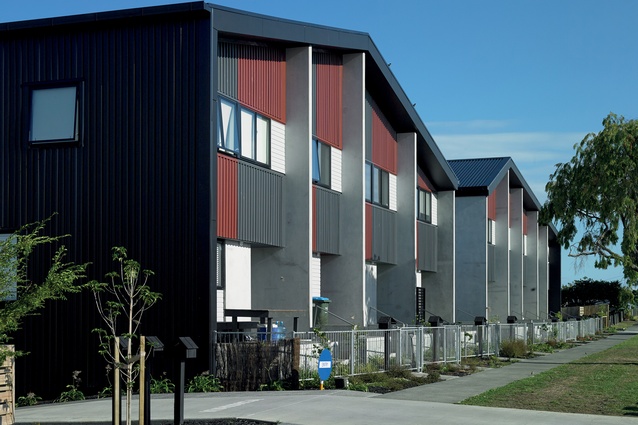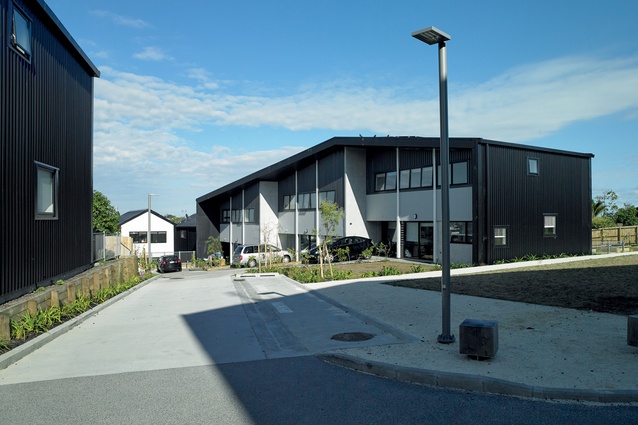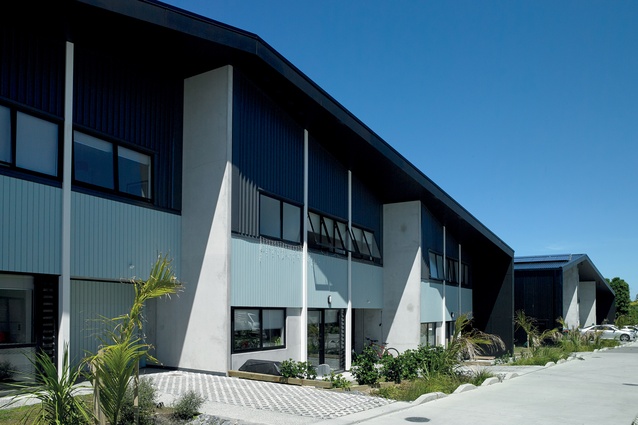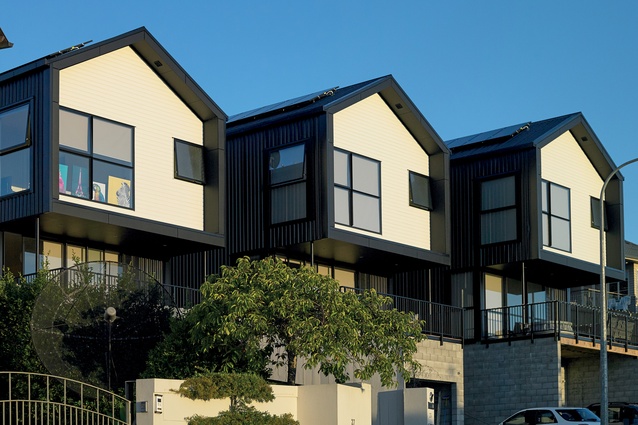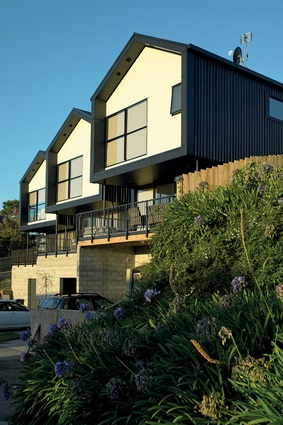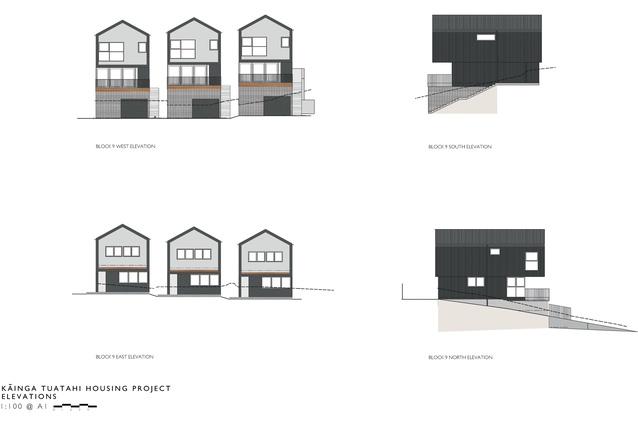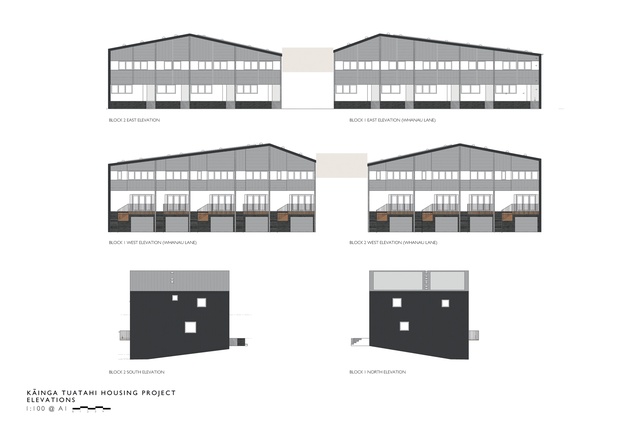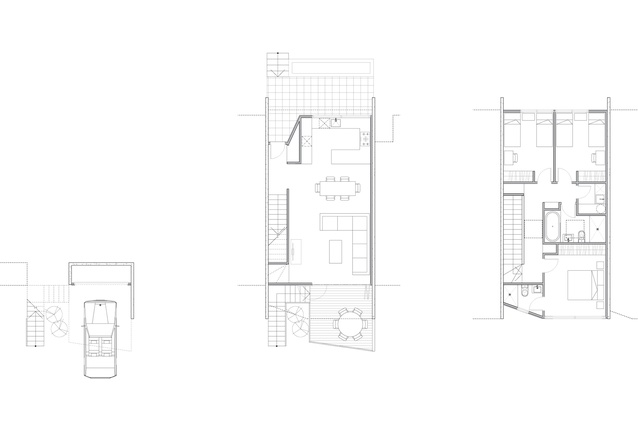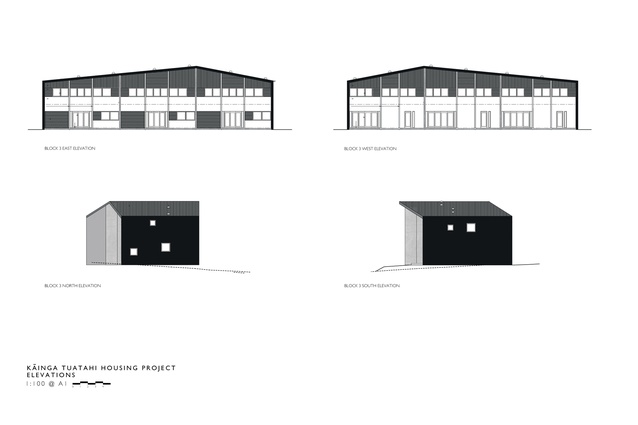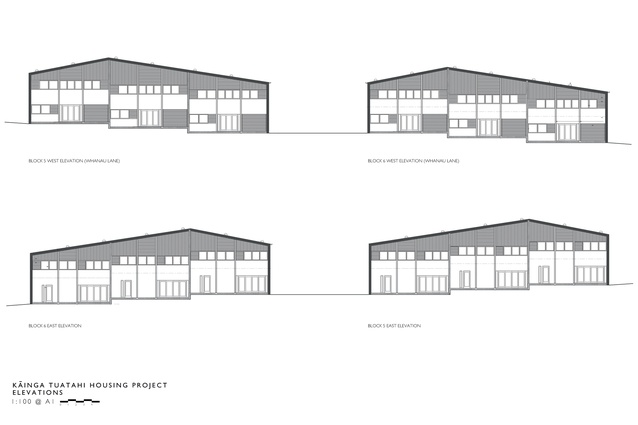Whānau-focused: Kāinga Tuatahi Housing
Big angular roofs cloak 30 homes designed by Stevens Lawson Architects for a significant site owned by Ngāti Whātua Ōrākei, overlooking Auckland’s Waitematā Harbour.
Those who know Ngāti Whātua Ōrākei’s marae and remember the 1970s’ occupation of Bastion Point, or Takaparawhā, will think of it as this Auckland iwi’s home ground but, actually, their last kāinga was down in Okahu Bay. They were kicked out of there in 1953 when their last houses were burned down in an Auckland Council tidy-up for the Queen’s visit.
They were then shifted into fibre-cement-clad state houses fringing Bastion Point, nicknamed Boot Hill. This was just over 100 years after they had welcomed Pākehā to Tāmaki; but we took everything and they ended up with nothing.
This new development, Kāinga Tuatahi (first place), is in Kupe Street. This street and others in Ōrākei date back to a 1928 Garden Suburb design by Reg Hammond, New Zealand’s first professional town planner, but it’s the First Labour Government state houses of the 1940s lining the street that give it character.
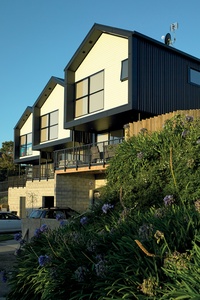
These were an early experiment in increasing neighbourhood density with many of them being two-storeyed duplexes or townhouse-like dwellings. No doubt, soon, they will be replaced with our generation’s experiments in medium density as we grapple with the housing crisis.
The street runs along a ridge, culminating in the marae, as well as the Savage Memorial, the last home for that First Labour Government’s prime minister, Michael Joseph Savage. All up, this prominent ridge is a pretty significant site and this latest development of 30 houses by Stevens Lawson Architects, on land re-acquired by Ngāti Whātua’s commercial arm, Whai Rawa, gives it even more significance.
We can’t solve this housing crisis in the same way that First Labour Government did, with a swathe of state houses. We need a much more multi-pronged approach and to use everything we have to unleash a variety of accommodation types to suit a much more diverse population, many of whom can’t afford houses in the old way.
And this is one brand-new approach. Ngāti Whātua Ōrākei, like other iwi, is gradually receiving land back through Treaty settlements or is able to purchase it with reparations money. However, the problem with Māori land is that it is difficult, if not impossible, to be granted a mortgage for buying it.
Ngāti Whātua has figured out a way around this by building a range of houses that its people can rent and occupy on long-term leasehold. At least one member of the family has to be Ngāti Whātua Ōrākei and there is an agreement to stop people ‘flipping’ houses (getting in cheaply and selling after a few years to net the capital gain), limiting any sale profit to the cost of living index or similar.
On this ridge, we have spectacular views of the isthmus and harbour, and the first impression of the development as you cruise down the Kupe Street ridge is of large, gabled roofs over clusters of houses. These big, broad gestures of place-making by Stevens Lawson Architects reflect the volcanic and island forms that punctuate the city’s undulating landscape for as far as the eye can see and, of course, they can also refer to the enfolding gable of the wharenui.
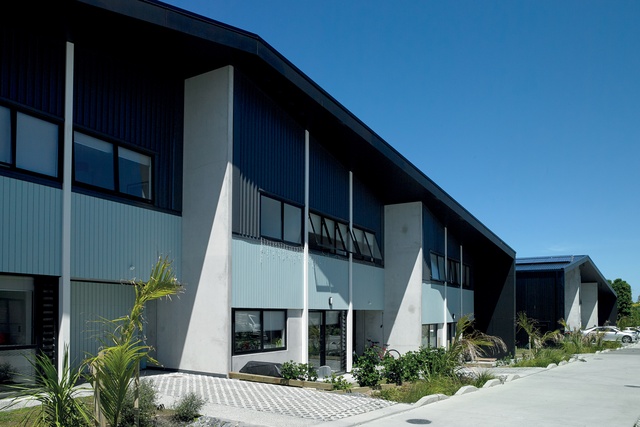
Hugh Kawharu, in his 1975 book Ōrākei: A Ngāti Whātua Community, was excoriating in his description of those first state houses into which the locals were relocated: single houses intended for nuclear families, which would serve as instruments to ensure Māori familes would be “cast in the Pākehā mould”. But these big angular roofs with generous eaves are like cloaks holding a group of families together, creating a sense of more-extended family connections: whānau.
Building housing, whether for Māori, Pākehā or new arrivals, is not just about putting roofs over people’s heads; it is about building communities. The layout of these dwellings creates lanes and includes communal gardens, green areas and play spaces. The architects are a little bit disappointed at the extent to which fences have sprung up but, then, a lot of people have little kids and big dogs. The façades have been articulated through angles in plan and changes of material and colour in order to avoid the blandness and regularity of those two-storeyed 1940s’ precursors down the road.
Another way in which early state houses didn’t suit Māori was the efficient clustering of plumbing fittings together, which enabled financial economy but wasn’t culturally appropriate. Here, toilets are carefully distanced from kitchens. There are three typologies, most gaining daylight from both eastern and western sides.

The best have cunning diagonal movement across their plans from room to room: a technique John Scott pioneered to make spaces feel bigger. The most interesting thing in one typology is that tenants could choose whether to use the garage space for a car or to take an option where the space could be fitted out as a fifth bedroom, a home office/study, a granny flat, a guest area or another gathering space.
Many wisely chose the second option. Giving our cheap, imported cars an entire room in the house is one of the dumbest things we do to make housing more expensive. Those big cloaking roofs also have photovoltaic panels on them and Tesla power walls to save electricity for later or return it to the grid. Lots of sharing.
I am a big believer in the need for higher density to solve Auckland’s housing crisis but we need to maintain quality. These homes were built on a tight budget but we have gained that quality here. As Whai Rawa director Ngarimu Blair said, when attending the first meeting to discuss the development, “We asked ‘what does Papakāinga mean?’ Out of nearly 100, no one said a house. They said community, safety, jobs, employment, culture and identity.”
The Kāinga Tuatahi housing project is one of the first of the new generation of housing for Māori as iwi determine and secure their futures with Treaty settlement money. But it is also outstanding in that it involves good architecture and is a model that could suit us all.
This article first appeared in Architecture New Zealand


